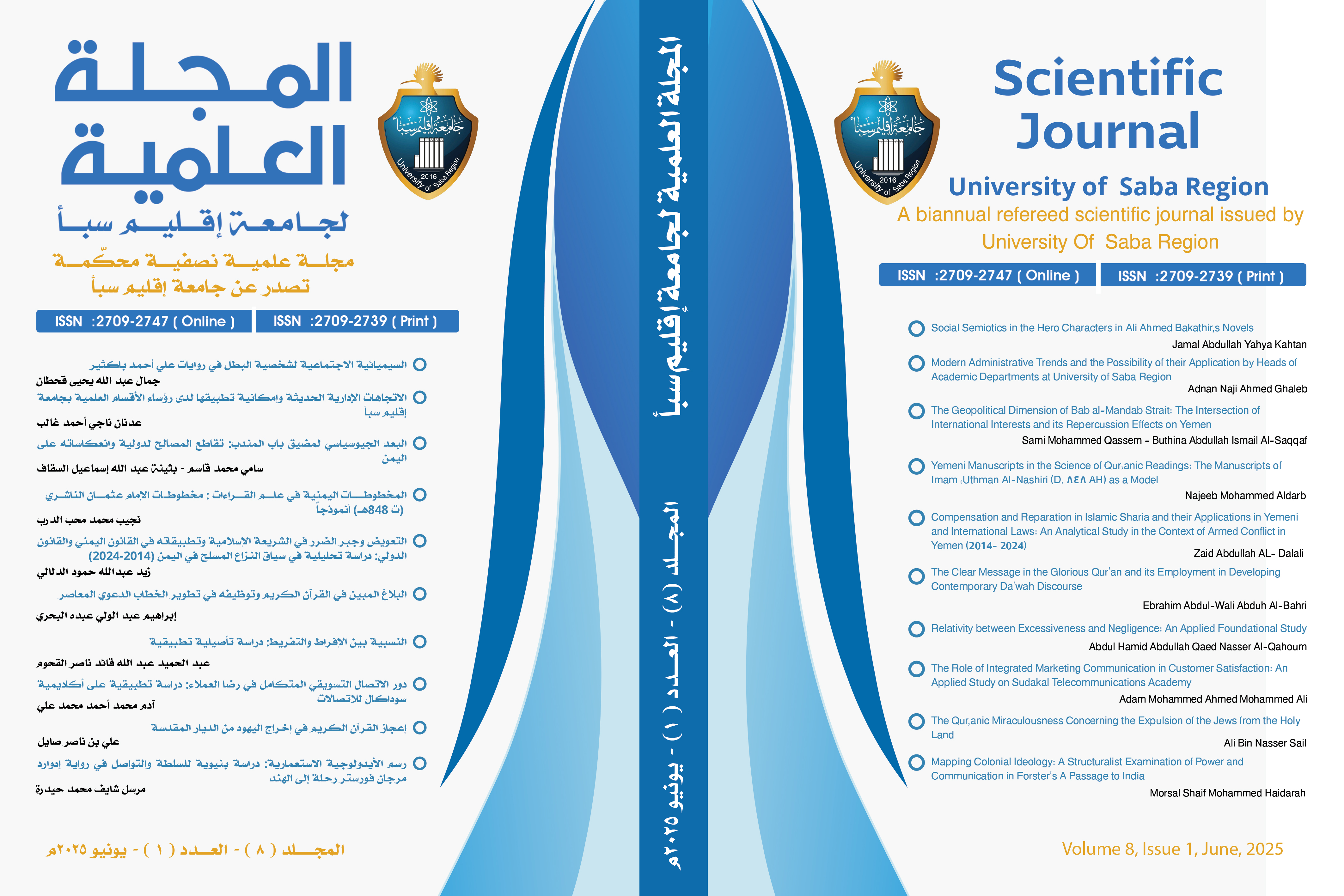Mapping Colonial Ideology: A Structuralist Examination of Power and Communication in Forster’s A Passage to India
DOI:
https://doi.org/10.54582/TSJ.2.2.119Keywords:
Actant, Sender, Receiver, Helper, OpponentAbstract
This paper examines how the structure of A Passage to India is used as a framework to convey the stereotype of the “Other” as inferior and as a tool for political propaganda, reflecting Forster’s colonial views. While many scholars have studied Forster’s political ideas in the story, they have not focused on how the structure of the narrative has been carefully employed by the author to convey these negative political views. Using Greimas’ framework of actants-subject, object, sender, receiver, helper, and opponent, this paper examines key interactions, such as those between Mrs. Moore, Adela, and Dr. Aziz at the mosque, the Bridge Party, and the Marabar caves, and how that such encounters are used to mock the newcomer desire see real India- the object of their interest. After these four encounters, the women ultimately abandon their hope to see real India mirroring the truthfulness of negative experience of the English who advise them to keep away from the Indians if they want to be safe.
Downloads
Published
How to Cite
Issue
Section
License
Copyright and Licensing
This journal publishes all scientific materials under the Creative Commons Attribution 4.0 International (CC BY 4.0) , license, which grants you the following permissions:
You are free to:
- Share — copy and redistribute the material in any medium or format for any purpose, even commercially.
- Adapt — remix, transform, and build upon the material for any purpose, even commercially.
- The licensor cannot revoke these freedoms as long as you follow the license terms.
Under the following terms:
- Attribution — You must give appropriate credit , provide a link to the license, and indicate if changes were made . You may do so in any reasonable manner, but not in any way that suggests the licensor endorses you or your use.
- No additional restrictions — You may not apply legal terms or technological measures that legally restrict others from doing anything the license permits.
Notices:
You do not have to comply with the license for elements of the material in the public domain or where your use is permitted by an applicable exception or limitation .
No warranties are given. The license may not give you all of the permissions necessary for your intended use. For example, other rights such as publicity, privacy, or moral rights may limit how you use the material.











